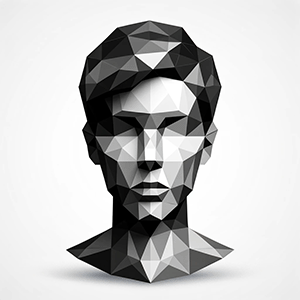Anton Ehrenzweig Quotes
- Art historian and psychoanalyst
- Austria
- 1908
Anton Ehrenzweig (1908-1967) was a psychoanalyst and art theorist who wrote extensively on the creative process. He is best known for his influential book The Hidden Order of Art (1967), which explored the unconscious aspects of creativity and the role of the unconscious in art. He also wrote The Ps…Read More
Anton Ehrenzweig (1908-1967) was a psychoanalyst and art theorist who wrote extensively on the creative process. He is best known for his influential book The Hidden Order of Art (1967), which explored the unconscious aspects of creativity and the role of the unconscious in art. He also wrote The Psychoanalysis of Artistic Vision and Hearing (1953), which examined the psychological aspects of artistic perception. Ehrenzweig’s work has been highly influential in the fields of psychoanalysis, art theory, and aesthetics.Read Less
Anton Ehrenzweig (1908-1967) was a psychoanalyst and art theorist who wrote extensively on the creative process. He is best known for his influential book The Hidden Order of Art (1967), which explored the unconscious aspects of creativity and the role of the unconscious in art. He also wrote The Psychoanalysis of Artistic Vision and Hearing (1953), which examined the psychological aspects of artistic perception. Ehrenzweig’s work has been highly influential in the fields of psychoanalysis, art theory, and aesthetics.
Anton Ehrenzweig Career Highlights
Anton Ehrenzweig was a renowned Austrian-British art historian and psychoanalyst. He was born in Vienna, Austria in 1908 and passed away in London, England in 1966. Ehrenzweig’s career was marked by his unique approach to understanding the relationship between art and the human psyche.
Key Contributions by Anton Ehrenzweig
Ehrenzweig’s most notable contribution to the field of art history was his theory of “spontaneous creativity.” He believed that the creative process was not a linear and conscious one, but rather a spontaneous and unconscious one. This theory challenged traditional notions of artistic creation and had a significant impact on the field of art history.In addition to his work in art history, Ehrenzweig also made significant contributions to the field of psychoanalysis. He was a student of Sigmund Freud and his work focused on the intersection of art and the human psyche. He believed that art could be used as a tool for understanding the unconscious mind and exploring the depths of human experience.
What Sets Anton Ehrenzweig Apart
What sets Anton Ehrenzweig apart is his interdisciplinary approach to understanding art and the human psyche. He combined his knowledge of art history and psychoanalysis to develop a unique perspective that challenged traditional ideas and opened up new avenues for exploration.Ehrenzweig’s work also stands out for its emphasis on the importance of the unconscious mind in the creative process. He believed that the unconscious played a crucial role in artistic creation and that by tapping into it, artists could produce truly innovative and meaningful works.
Takeaways
Anton Ehrenzweig’s work continues to be studied and discussed by scholars in the fields of art history and psychoanalysis. His theories have had a lasting impact on our understanding of the creative process and the relationship between art and the human psyche. His interdisciplinary approach and emphasis on the unconscious mind serve as valuable lessons for those interested in exploring the depths of human experience through art.



